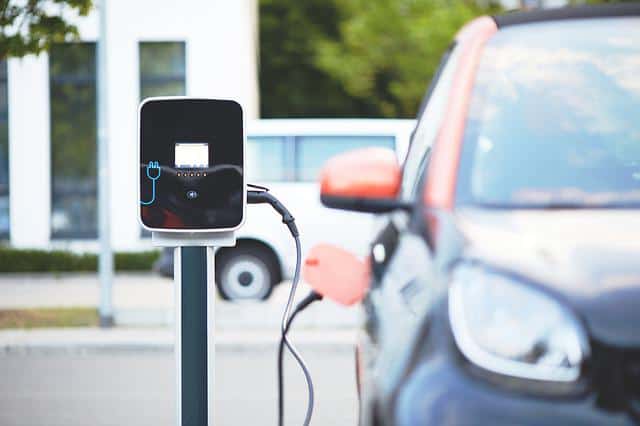
The goal of this guide is to help people understand, calculate and shrink their carbon footprints.
By shrinking your footprint you can reduce the contribution your lifestyle makes to climate change. It can also help you to understand the issues of science, policy and technology that are central to climate change. Furthermore, the process shrinking your footprint can motivate you to take further climate action.
Understand climate change
The threat climate change poses to society, the economy and the natural world is quite well understood. Based on current trends the earth is expected to warm by around 2°C to 4°C (3.6°F to 7.2°F) this century. Due to the incomplete understanding of the complex climate system, and uncertainty about future emissions, we can’t be sure how great this warming will be. The risk underlying this uncertainty is the key reason we need urgent action to reduce emissions that will insure against the possibility of catastrophic warming.
In step three of this guide we detailed a global carbon budget aimed at keeping warming by the end of this century to less than 2°C (3.6°F) above the pre-industrial level. This budget required reducing man-made greenhouse gas emissions from around 50 Gt CO2e in 2010 to less than 20 Gt CO2e in 2050. At the individual level this implies even more dramatic reductions, with the average personal footprints needing to fall from around 5t CO2e in 2010 to 1.5t CO2e in 2050.
Find a way to live a comfortable and fulfilling life within such a tight carbon budget is a challenge that people around the world will need to take on board if we are to tackle climate change by reducing global emissions.
Calculate your footprint

Many people act to reduce their carbon footprint without ever calculating it. Although such action can produce serious reductions it can just as easily produce trivial ones. Calculating your footprint provides a way of telling the difference between the two. The better your calculation the more easily you will be able to prioritise which parts of your footprint are the most important.
Whether you use an online calculator or do you own calculation, getting an accurate calculation of your footprint is a challenge. Housing and travel footprints should be relatively easy and accurate, if you get enough information. Food and service footprint calculations are both more difficult and less precise, while product footprint calculations can be quite challenging with high uncertainty.
The numerous examples shown throughout this guide are examples of how carbon calculations can improve understanding. By comparing the emissions of a kilowatt-hour used, mile travelled, kilo-calorie consumed or dollar spent we sharpen our understanding of carbon footprints. The better these calculations are, the more targeted our actions can be.
Shrink your footprint
The most important thing to remember when shrinking your footprint is scale. Although your personal footprint is made up of hundreds of items, it is generally dominated by just a few. Making a change to these few items is likely to result in the biggest reductions, so it pays to think big.
If after calculating your personal footprint you can list its items in terms of size you will create a type of ‘things to shrink’ list. Using our US example, the list looks like this: petrol (4.8 t), electricity (3.1 t), natural gas (1.0 t), red meat (0.9 t), health care (0.9 t), recreation (0.7 t) and air travel (0.7 t). In this list the obvious opportunities are in reducing the emissions from driving, electricity use, heating and meat consumption. Your own footprint may reveal other priorities.
In steps five to nine of this guide we have detailed different ways to shrink your housing, travel, food, product and service footprints. The information and advice shown in these steps is just a valid whether you are trying to reduce your personal footprint to 20t CO2e or to 2t CO2e.
Only by experimenting with your own footprint will you determine which actions are practical and effective for you. In time you will also see just see how far you can shrink.
Take further action
If you have made the effort to understand, calculate and shrink your own carbon footprint, you will no doubt be motivated to take further climate action. You will also realise that personal emission reductions are only part of the bigger picture. The scale of emissions reductions required globally require that governments, companies and other organisations must play there part in providing climate solutions.
What role you can play in further climate action depends very much on your own skills, work and interests. In the last section we briefly highlighted the options of offsetting emissions, supporting government action and driving business innovation. With the right knowledge and motivation you may be able climate action that has an effect far beyond your own footprint.
The bottom line
The goal of this guide has been to help people understand, calculate and shrink their carbon footprint. Whether your aim is to reduce your footprint by one tonne, or to shrink it to one tonne, this guide should be full of useful information.
If you make a serious effort to shrink your own carbon footprint you will be confronted with a number of challenges. Meeting your housing, travel, food, product and service footprint on a strict carbon budget is not easy. But this challenge is exactly what we must do both individually and collectively in order to limit the risks of climate change.
Lindsay Wilson
I founded Shrink That Footprint in November 2012, after a long period of research. For many years I have calculated, studied and worked with carbon footprints, and Shrink That Footprint is that interest come to life.
I have an Economics degree from UCL, have previously worked as an energy efficiency analyst at BNEF and continue to work as a strategy consultant at Maneas. I have consulted to numerous clients in energy and finance, as well as the World Economic Forum.
When I’m not crunching carbon footprints you’ll often find me helping my two year old son tend to the tomatoes, salad and peppers growing in our upcycled greenhouse.
